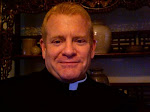Beauty
of Holiness
Fr.
Tony’s Midweek Message
August
21, 2019
As
many of you know, I was raised in the Church of Jesus Christ of Latter-day
Saints, commonly referred to then as “Mormons.”
Church in my youth was a very horizontal, not a vertical, affair: lay leadership, congregants teaching and
preaching to each other. We did have a
weekly “sacrament,” what we called Holy Communion: a 10-minute exercise with
water in little paper cups and broken white bread that served as a short side
show break in the main event, the “talks” we gave each other on gospel
topics. There was no liturgical reading
of scripture, set prayers or responses, usually only one musical “number” from
a poorly rehearsed volunteer choir, and director-led gospel songs and hymns for
opening, sacrament, and closing. Once a
month, we had “fast and testimony” service where the prepared “talks” were
replaced by open-mic sharing of personal faith stories.
When
I was a sophomore in High School, our family was invited to attend the wedding
of the daughter of one of my father’s business partners. He ran the office machines store in Wenatchee,
Washington, while my father ran the one in Moses Lake, about 40 minutes away. My father’s partner was an Episcopalian, and
the wedding was to be held at St. Luke’s in Wenatchee. It was the first time I attended a church service
outside of Mormonism.
The
evening service was lit by dozens of candles, set in multi-branched
candelabra. The ministers wore exquisite
vestments, shiny and colorful. The music
was gorgeous, and the preaching well prepared by a professional trained in the
subtleties of scriptural interpretation and theology. The bride wore a white lace dress with a 10-foot
train; the groom was in white-tie. The
church was filled with clouds of sweet-smelling incense that accented and at
times obscured the blazing candles. The
liturgy was chanted, and we all followed along in the Book of Common
Prayer.
I
was astounded. It was like nothing I had
ever seen or experienced. Participating,
I realized I finally understood the word “worship”: prayers, hymns, and beauty
addressed to God, rather than teaching and admonition addressed to each
other. On the ride home, I asked my parents why it was
different from our weekly church fare. “Oh—the Episcopalians are like Catholics:
they love stagecraft and scripted texts rather than the plain old Gospel.” But this seemed to me to miss the deep beauty
of what had gone on, and from that Sunday on in LDS Church, I always was more
solemn, more God-directed, and more attentive during “sacrament.” And I was increasingly aware of the poverty
of the preaching and the lack of reverential “worship” in my Mormon ward.
I
learned the great benefits of horizontal, people-to-people communal life in
faith in the Church of my youth. For
that, I will always be grateful. But by
the time I was in college, I had become more and more hungry for worship and
the “beauty of holiness.” This was fed
somewhat by occasional attendance at Roman Catholic mass in graduate school,
but by the time Elena and I were intentionally in “church-shopping” mode, we
realized that many of the things we found repellant in Mormonism were also
shared by the Roman Church, including an overbearing hierarchy, demands to let intellectual life be subsumed
by the religious experience, and subordination of women.
When
we first attended an Episcopal Church as adults open to changing churches, at
All Saints Church in Chevy Chase, Maryland, we felt we had come home. This broad church parish had its own
problems, to be sure, but the beauty of holiness was in every gathering, rightly
called “worship services,” characterized by reverential prayers addressed to
God in well thought-out and prepared words, intentional acts of worship
including beauty appealing to all the senses, and well informed and responsible
preaching. Even the hymns were better music and
literature.
I
am grateful I am an Episcopalian.
Grace
and peace.
--Fr.
Tony+













Word!
ReplyDeleteBeautifully said. I come from the Eastern Orthodox Church and
ReplyDeleteam so grateful to have come
to a Church both Reformed and Catholic.